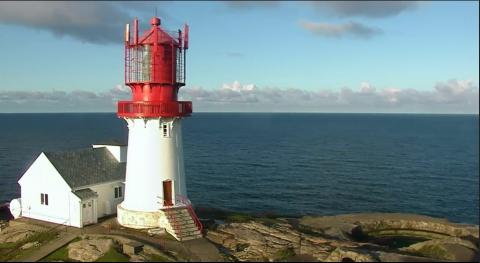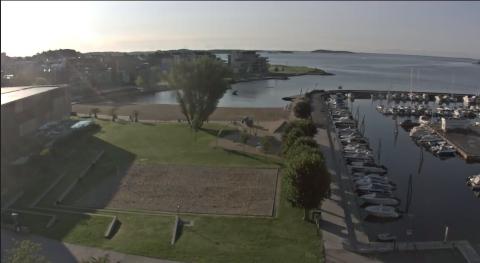Energy is essential for the world today and the demand of green energy is increasing. Development and research in green energy enables new technologies to be realized. Coriolis A/S contributes to this wave by investigating a more efficient and less costly alternative to harvesting energy from marine currents – the Foil Swing Generator (FSG).
A vertically reciprocating hydrofoil containing air in compartments in the foil may produce energy by repeatedly submerging and raising itself in the water column by the lift force induced from the current speed. The hydrostatic pressure is used to compress the air which could run an air turbine or deliver compressed air.
A parametric study of the different system and environmental variables are performed to find the optimal design. Solving the conservation of momentum in the vertical direction with 4th order Runge-Kutta for systems in Matlab gives indications of the optimal design.
The power production of the FSG depends exponentially on the current speed and the vertical speed of the foil depends more or less linearly on the current speed. Increasing the vertical travelled distance will increase the power somewhat linearly in the start and then with a logarithmic decline. It is optimal to have the foil go deeper with a large number of offloads rather than a small vertical distance with many offloads. The power produced has shown to be in the range of it competitors. A thin foil with chord and span length of 5 and 25 meters is more efficient than a thick foil for most of the different travelled vertical distances and current speeds. Thin foils are believed to be the most efficient for different combinations of small chord and span lengths.
Compared to a conventional tidal turbine the FSG is feasible for long vertical distances as the relative costs of the FSG are assumed to be smaller than for the tidal turbine. This suggests that the Foil Swing Generator should be situated in the fast moving large scale ocean currents.
Results given in this thesis needs to be considered as an upper bound for the present design of the FSG as a range of approximations and assumptions are set. However, the FSG is assumed to still be feasible as the thesis revealed more efficient design and system configurations which will improve the technology.
A vertically reciprocating hydrofoil containing air in compartments in the foil may produce energy by repeatedly submerging and raising itself in the water column by the lift force induced from the current speed. The hydrostatic pressure is used to compress the air which could run an air turbine or deliver compressed air.
A parametric study of the different system and environmental variables are performed to find the optimal design. Solving the conservation of momentum in the vertical direction with 4th order Runge-Kutta for systems in Matlab gives indications of the optimal design.
The power production of the FSG depends exponentially on the current speed and the vertical speed of the foil depends more or less linearly on the current speed. Increasing the vertical travelled distance will increase the power somewhat linearly in the start and then with a logarithmic decline. It is optimal to have the foil go deeper with a large number of offloads rather than a small vertical distance with many offloads. The power produced has shown to be in the range of it competitors. A thin foil with chord and span length of 5 and 25 meters is more efficient than a thick foil for most of the different travelled vertical distances and current speeds. Thin foils are believed to be the most efficient for different combinations of small chord and span lengths.
Compared to a conventional tidal turbine the FSG is feasible for long vertical distances as the relative costs of the FSG are assumed to be smaller than for the tidal turbine. This suggests that the Foil Swing Generator should be situated in the fast moving large scale ocean currents.
Results given in this thesis needs to be considered as an upper bound for the present design of the FSG as a range of approximations and assumptions are set. However, the FSG is assumed to still be feasible as the thesis revealed more efficient design and system configurations which will improve the technology.
- Category
- Engervik
Commenting disabled.








